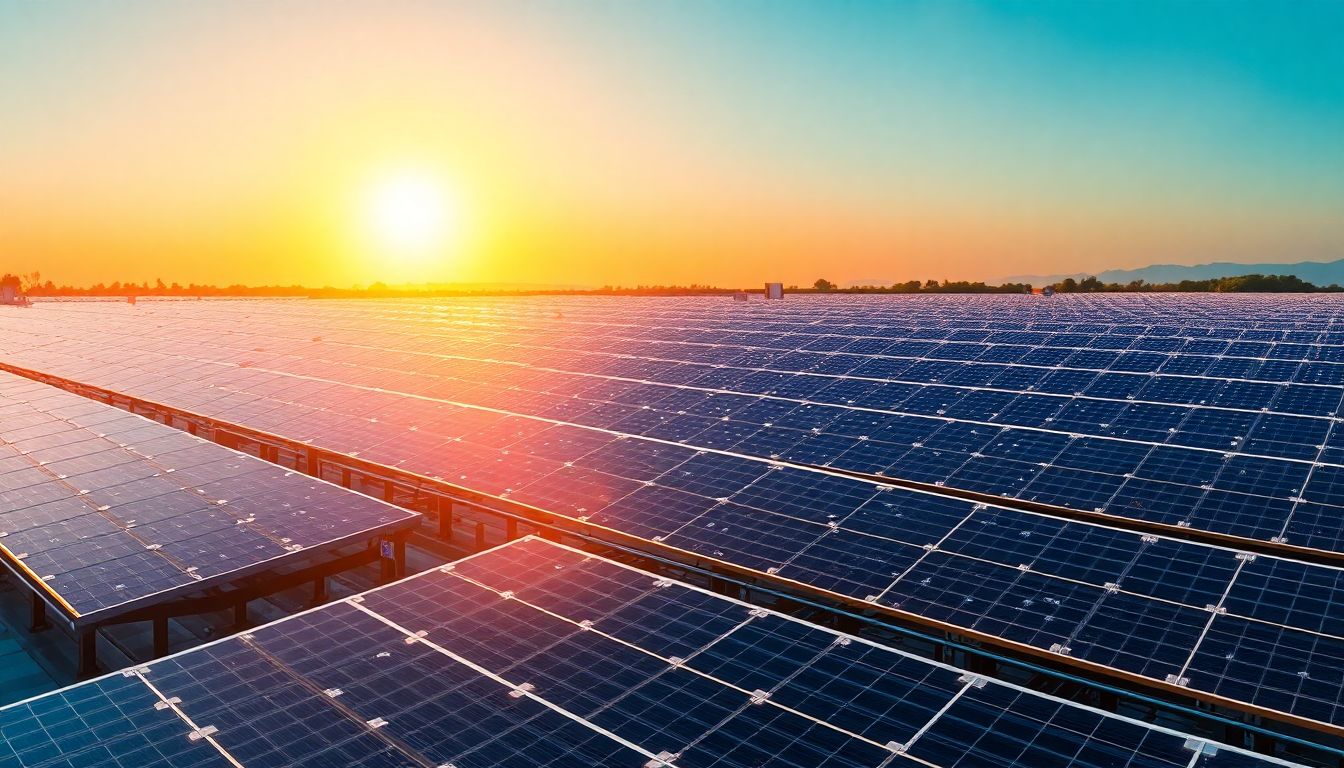The world is in genuine need of alternatives to power sources. Solar energy is certainly of paramount importance. Solar technology is getting cheaper and better every day. What are the new developments concerning solar panels? The latest technologies seek to increase their efficiency, reduce their prices, and save the environment. So, let’s check out some cool advancements in the area!
Perovskite Solar Cell: The Next Generation
Perovskite solar cells stand to have a large impact. What’s so unique about it? It’s all about that structure. They may give super high efficiency.
Perovskite Structure and Functionality Explained
Perovskites are special materials. Their crystal arrangements are unique. This enables them to absorb sunlight and separate charges very well. That is, a rather super-efficient catcher’s mitt for sunlight.
Perovskites Technology: Advantages and Disadvantages
Perovskite advantages are great. They can be very efficient. They can be made at relatively low cost. There are also disadvantages: they can degrade, some materials are toxic. Is it really a trade-off?
The Future of Perovskite Solar Cell
Researchers are working towards addressing these issues. They want to make perovskites more stable. They’re also trying to utilize less toxic materials. If they are successful, widespread bring-along possibilities could be on the table. Wouldn’t that be quite an adventure?
Bifacial Solar Panels: Harvesting Light from Two-sided
Bifacial solar panels are super cool! They harvest sunlight from both sides. So, how does this tech work exactly? Let us find out.
How Bifacial Technology Works
These panels have a transparent back. The light reflected from the ground hits the backside of these panels. This is called the “albedo effect.” More light equals more power! Pretty cool, huh?
Installation and Performance Data in Real Life
Bifacial panels have proved very effective throughout different locations. Bathing farms, deserts, and snowy places! They produce much more energy than conventional panels. How much more? It actually differs in relation to the environment.
Maximizing Bifacial Panel Installation
Just how do you get the most out of bifacial panels? Angling is important. They should be installed relatively high above ground. Have a light-colored ground surface under them. These tricks help them work a lot better.
Heterojunction Technology (HJT): The Combo of Bests from Both Worlds
HJT panel basically presents an amalgamation of crystallized silicon and thin films. So why put them together?
The Science Behind Heterojunction Solar Cells
HJT panels have several layers. Each layer performs its own function. This structure minimizes power loss and enables the super-high efficiency of these panels. It’s like running a concert grand choir!
Advantages of HJT Compared To Traditional Silicon Panels
HJT panels are better. High efficiency. Thermal control is sufficient. With long life. What more do I say?
HJT Panel Manufacturers and Market Developments
Several companies are in the business of making HJT panels. There widens the market for this technology. The acceptability is gaining momentum. Will HJT be set to become the standard?
Concentrated Photovoltaics (CPV): Focusing Sunlight for Added Power
CPV systems make use of lenses or mirrors which focus sunlight on tiny cells. And does it generate some added power? Let’s find out.
CPV Systems Designs and Components
Such CPV has some different models; bi-facial arrays and dish-Stirling are the two types, which use a tracking system with special lenses to optically concentrate sunlight for more exposure.
Advantages and Limitations of CPV Technology
CPV can be very efficient; it’s wonderful for bigger power plants, but it has: Startup costs that are too high; it needs direct sunlight; is it possible that these are the limits?
The Future of CPV in Utility-Scale Solar
CPV may shine in sunny places, but leave researchers with some cost-reduction measures. In addition, they have to deal with reliability issues; it’s a feasible option for right locations.
Faithful Incorporation of QD into Solar Cells: An Innovative Approach in Light Absorption
Little quantum dots spare unique properties but can improve solar power.
Properties of Quantum Dots and their Functionality
They can be tuned to grab certain specific colors while generating additional energy from them through this modification enhancing its efficacy; thus offering prospects of very efficient panels simply by delivering this process which is termed MEG.
Challenges and Opportunities in Quantum Dot Solar Cell Development
Quantum dots have challenges; they are not yet highly efficient and may be unstable, but there are good prospects to enhance them with nanotech.
The Long-Term Potential of Quantum Dot Technology
One day, quantum dots will prove to be really phenomenal. They will construct exceptionally cheap and very highly efficient solar cells. It is a long-term goal. Is this feasible now?
Conclusion
The technology for solar panels is never stagnant. It just advances further with many new technologies such as perovskites, bifacial, HJT, and more novel concepts like CPV and quantum dot kept for the future. Investing in solar should always be relevant. Well, support future solar innovations! Adopt energetically the use of solar for the home or business.










